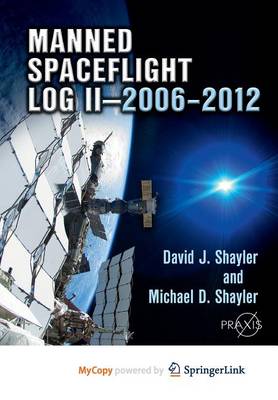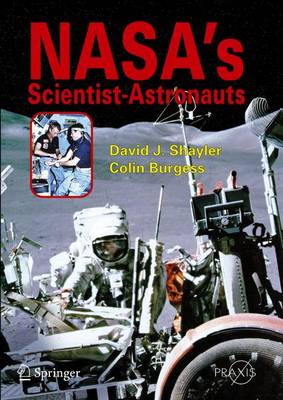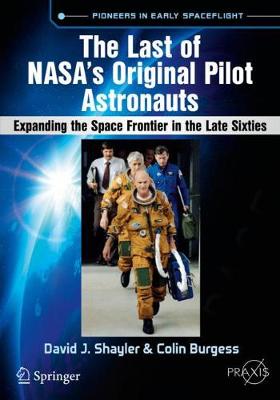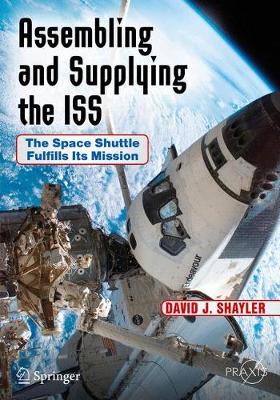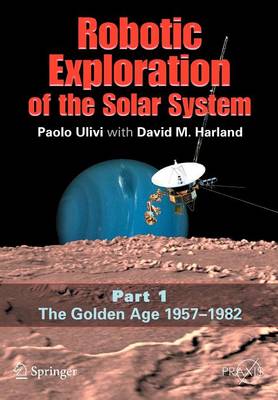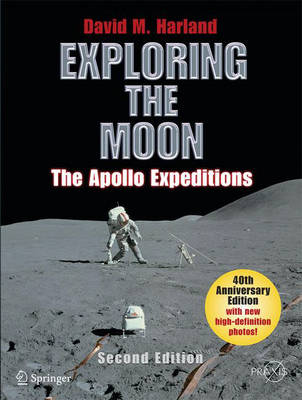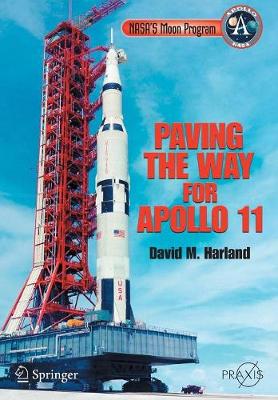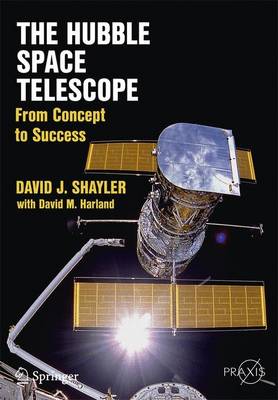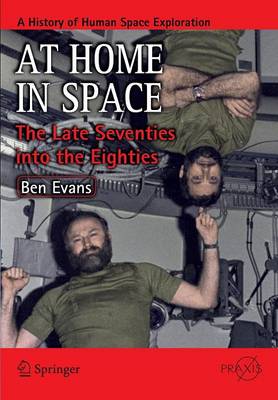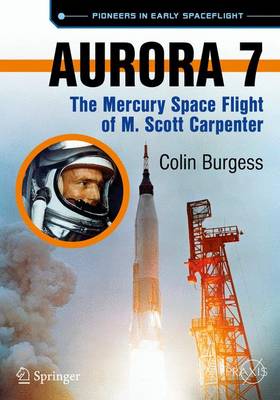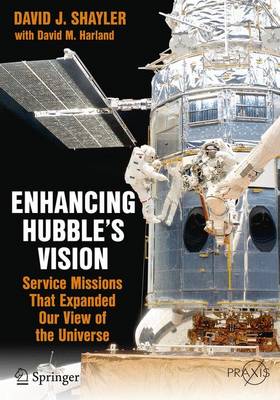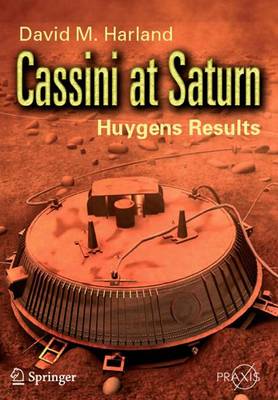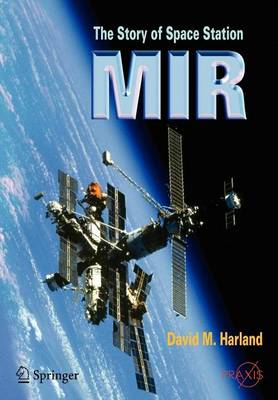Space Exploration
1 primary work • 27 total works
Book 158
The first chapter explains how human spaceflight has approached the different challenges of exploring space and provided the hardware to meet those challenges. This chapter also describes the various attempts to reach orbital flight and the often confusing distinction between ballistic, sub-orbital, and so-called 'astro-flights' of the X-15 rocket research aircraft program. Chapter 2 recalls key historic moments and missions across five decades of human spaceflight. Each decade has provided useful lessons for the next and a foundation for future achievement. The new mission entries are collected in the third section in chronological order. A review of the next steps in human spaceflight, including plans to occupy the International Space Station well into the 2020s and the growth of the Chinese manned space program including a large space station and planned base on the Moon, is discussed in Chapter 4. The tables provide a complete up-to-date overview of human spaceflight operations and experience from April 1961 to September 2012 and a selected chronology of important milestones from those years. Completing the book is a comprehensive bibliography that lists all the major Springer-Praxis human spaceflight titles and other important works that provide the reader with a resource to continue further research.
This book provides unique access to the story of how scientists were accepted into the American Space Programme, and reveals how, after four difficult decades, the role of the heroic test pilot astronaut has been replaced by men and women who are science orientated space explorers.
Praxis Manned Spaceflight Log 19612006
by Michael D Shayler and Tim Furniss
This flagship work charts a complete chronological log of orbital manned spaceflight. Included are the X-15 "astroflights" of the 1960s, and the two 1961 Mercury and Redstone missions which were non-orbital. There is an image depicting each manned spaceflight, and data boxes containing brief biographies of all the space travelers. The main text is a narrative of each mission, its highlights and accomplishments, including the strange facts and humorous stories connected to every mission. The resulting book is a handy reference to all manned spaceflights, the names of astronauts and cosmonauts who flew on each mission, their roles and accomplishments.
Docking technologies had to constantly evolve as the designs of the early space stations changed. It was hoped the shuttle would make missions to the Russian Salyut and American Skylab stations, but thesewere postponed until the Mir station became available, while plans for getting a new U. S. space station underway were stalled.
In Linking the Space Shuttle and Space Stations, the author delves into the rich history of the Space Shuttle and its connection to these early space stations, culminating in the nine missions to dock the shuttle toMir. By 1998, after nearly three decades of planning and operations, shuttle missions to Mir had resulted in:
• A proven system to link up the space shuttle to a space station• Equipment and hands-on experience in handling tons of materials• An infrastructure to support space station assembly and resupply
Each of these played a pivotal role in developing the skills and procedures crucial to the creation of the later, much larger and far more complex International Space Station, as described in the companionvolume Assembling and Supplying the ISS: The Space Shuttle Fulfills Its Mission.
The Last of NASA's Original Pilot Astronauts
by David J Shayler and Colin Burgess
Resulting from the authors’ deep research into these two pre-Shuttle astronaut groups, many intriguing and untold stories behind the selection process are revealed in the book. The often extraordinary backgrounds and personal ambitions of these skilled pilots, chosen to continue NASA’s exploration and knowledge of the space frontier, are also examined.
In April 1966 NASA selected 19 pilot astronauts whose training was specifically targeted to the Apollo lunar landing missions and the Earth-orbiting Skylab space station. Three years later, following the sudden cancellation of the USAF’s highly classified Manned Orbiting Laboratory (MOL) project, seven military astronauts were also co-opted into NASA’s space program.
This book represents the final chapter by the authors in the story of American astronaut selections prior to the era of the Space Shuttle. Through personal interviews and original NASA documentation, readers will also gain a true insight into a remarkable age of space travel as it unfolded in the late 1960s, and the men who flew those historic missions.
Fulfilling an objective it had been designed to complete decades before, 37 Shuttle missions carried the majority of the hardware needed to build the ISS and then acted as a ferry and supply train for early resident crews to the station. Building upon the decades of development and experience described in the companion volume Linking the Space Shuttle and Space Stations: Early Docking Technologies from Concept to Implementation, this book explores
• a purpose-built hardware processing facility • challenging spacewalking objectives • extensive robotic operations • undocking a unmanned orbiter
The experience and expertise gained through these missions allows space planners to improve space construction skills in advance of even more ambitious plans in the future.
Robotic Exploration of the Solar System
by Paolo Ulivi and David M Harland
This fascinating book is a must-have text for space enthusiasts with an engineering bent. It is a detailed history of unmanned missions that have explored our solar system. The subject is treated wherever possible from an engineering and scientific standpoint and includes technical descriptions of the spacecraft, their mission designs and their instrumentations. Scientific results are discussed in depth, together with details of mission management. The book is fantastically comprehensive, covering missions and results from the 1950s right up to the present day. Some of the latest missions and their results appear in a popular science book for the first time.
In this comprehensive overview of Man’s relationship with his planet’s nearest neighbor, David Harland opens with a review of the robotic probes, namely the Rangers which returned television before crashing into the Moon, the Surveyors which 'soft landed' in order to investigate the nature of the surface, and the Lunar Orbiters which mapped prospective Apollo landing sites. He then outlines the historic landing by Apollo 11 and the final three missions of comprehensive geological investigations. He concludes with a review of the robotic spacecraft that made remote-sensing observations of the Moon. This Commemorative Edition includes a foreword by one of the original astronauts as well as an extra section reviewing the prospect of renewed exploration there. New graphics and images are also included.
This book provides an overview of the origins of the Apollo program and descriptions of the ground facilities, launch vehicles and spacecraft that were developed in the quest to reach - and return from - the surface of the moon. It will serve as an invaluable single-volume sourcebook for space enthusiasts, space historians, journalists, and others. The text includes a comprehensive collection of tables listing facts and figures for each mission.
In 'Paving the Way for Apollo 11' David Harland explains the lure of the Moon to classical philosophers, astronomers, and geologists, and how NASA set out to investigate the Moon in preparation for a manned lunar landing mission. It focuses particularly on the Lunar Orbiter and Surveyor missions.
The highly successful Hubble Space Telescope was meant to change our view and understanding of the universe. Within weeks of its launch in 1990, however, the space community was shocked to find out that the primary mirror of the telescope was flawed. It was only the skills of scientists and engineers on the ground and the daring talents of astronauts sent to service the telescope in December 1993 that saved the mission.
For over two decades NASA had developed the capabilities to service a payload in orbit. This involved numerous studies and the creation of a ground-based infrastructure to support the challenging missions. Unique tools and EVA hardware supported the skills developed in crew training that then enabled astronauts to complete a demanding series of spacewalks.
Drawing upon first hand interviews with those closely involved in the project over thirty years ago this story explains the development of the servicing mission concept and the hurdles that had to be overcome to not only launch the telescope but also to mount the first servicing mission – a mission that restored the telescope to full working order three years after its launch, saved the reputation of NASA, and truly opened a new age in understanding of our place in space.
This is not just a tale of space age technology, astronauts and astronomy. It is also a story of an audacious scientific vision, and the human ingenuity and determination to overcome all obstacles to make it possible. Hubble Space Telescope: From Concept to Success is a story of an international partnership, dedicated teamwork and a perfect blend of human and robotic space operations that will inspire people of all ages. The subsequent servicing missions that enabled the telescope to continue its scientific program beyond its 25th year in orbit are described in a companion volume Enhancing Hubble’s Vision: Servicing a National Treasure.
TO A NATION enthralled by the heroic exploits of the Mercury astronauts, the launch of Lt. Cmdr. Scott Carpenter on NASA’s second orbital space flight was a renewed cause for pride, jubilation and celebration. Within hours, that excitement had given way to stunned disbelief and anxiety as shaken broadcasters began preparing the American public for the very real possibility that an American astronaut and his spacecraft may have been lost at sea.
In fact, it had been a very close call. Completely out of fuel and forced to manually guide Aurora 7 through the frightening inferno of re-entry, Carpenter brought the Mercury spacecraft down to a safe splashdown in the ocean. In doing so, he controversially overshot the intended landing zone. Despite his efforts, Carpenter’s performance on the MA-7 mission was later derided by powerful figures within NASA. He would never fly into space again.
Taking temporary leave of NASA, Carpenter participated in the U.S. Navy’s pioneering Sealab program. For a record 30 days he lived and worked aboard a pressurized habitat resting on the floor of the ocean, becoming the nation’s first astronaut/aquanaut explorer.
Following extensive research conducted by noted spaceflight historian Colin Burgess, the drama-filled flight of Aurora 7 is faithfully recounted in this engrossing book, along with the personal recollections of Scott Carpenter and those closest to the actual events.
This book tells the story of the four missions to maintain Hubble's successful operation. Between 1997 and 2009 these repaired, serviced and upgraded the instruments on the telescope to maintain its state-of-the-art capabilities. It draws on first hand interviews with those closely involved in the project. The spacewalking skills and experiences gained from maintaining and upgrading Hubble had direct application to the construction of the International Space Station and help with its maintenance. These skills can be applied to future human and robotic satellite servicing and maintenance activities as well, not only in Earth orbit but at locations deeper in space.
A companion to this book, The Hubble Space Telescope: From Concept to Success, relates the events of the Telescope’s launch in 1990 and its rough start, after a 20-year struggle to place a large optical telescope in orbit. Originally intended to operate for fifteen years, Hubble has just passed its 25th anniversary, and there is every expectation that it will survive for thirty years. Despite its early problems, the Hubble Space Telescope has become a lasting legacy of the Space Shuttle program, and indeed is a national treasure.
*Combines a review of previous knowledge of Saturn, its rings and moons, including Titan, with new spacecraft results in one handy volume.
*Provides the latest and most spectacular images, which will never have appeared before in book form.
*Gives a context to enable the reader to more easily appreciate the stream of discoveries that will be made by the Cassini-Huygens mission.
*Tells the exciting story of the Huygens spacecraft's journey to the surface of Titan.
* Depicts Mir's assembly piece by piece, in space, between 1982 and 1996.
* Describes how Mir became an international research laboratory.
* Advises how Mir technology went on to form the 'core modules' of the ISS.
* The definitive account of Mir throughout its life through to de-orbiting in March 2001.
Focuses on the causes of the failures and discusses how the engineering knowledge base has been enhanced by the lessons learned.
Discusses non-fatal anomalies which do not affect the ultimate success of a mission, but which are failures nevertheless.
Describes engineering aspects of the spacecraft, making this a valuable complementary reference work to conventional engineering texts.
To commemorate the momentous 50th anniversary of Yuri Gagarin’s pioneering journey into space on 12th April 2011, a series of five books – to be published annually – will explore this half century, decade by decade, to discover how humanity’s knowledge of flying, working and living in space has changed. Each volume will focus not only upon the individual missions within ‘its’ decade, but also upon the key challenges facing human space exploration at specific points within those 50 years: from the simple problems of breathing and eating in space to the challenges of venturing outside in a pressurised spacesuit and locomotion on the Moon.
The first volume of this series will focus upon the 1960s, exploring each mission from April 1961 to April 1971 in depth: from the pioneering Vostok flights to the establishment of the first Salyut space station and from Alan Shepard’s modest sub-orbital ‘hop’ into space to his triumphant arrival at the Moon’s Fra Mauro foothills almost a decade later.
